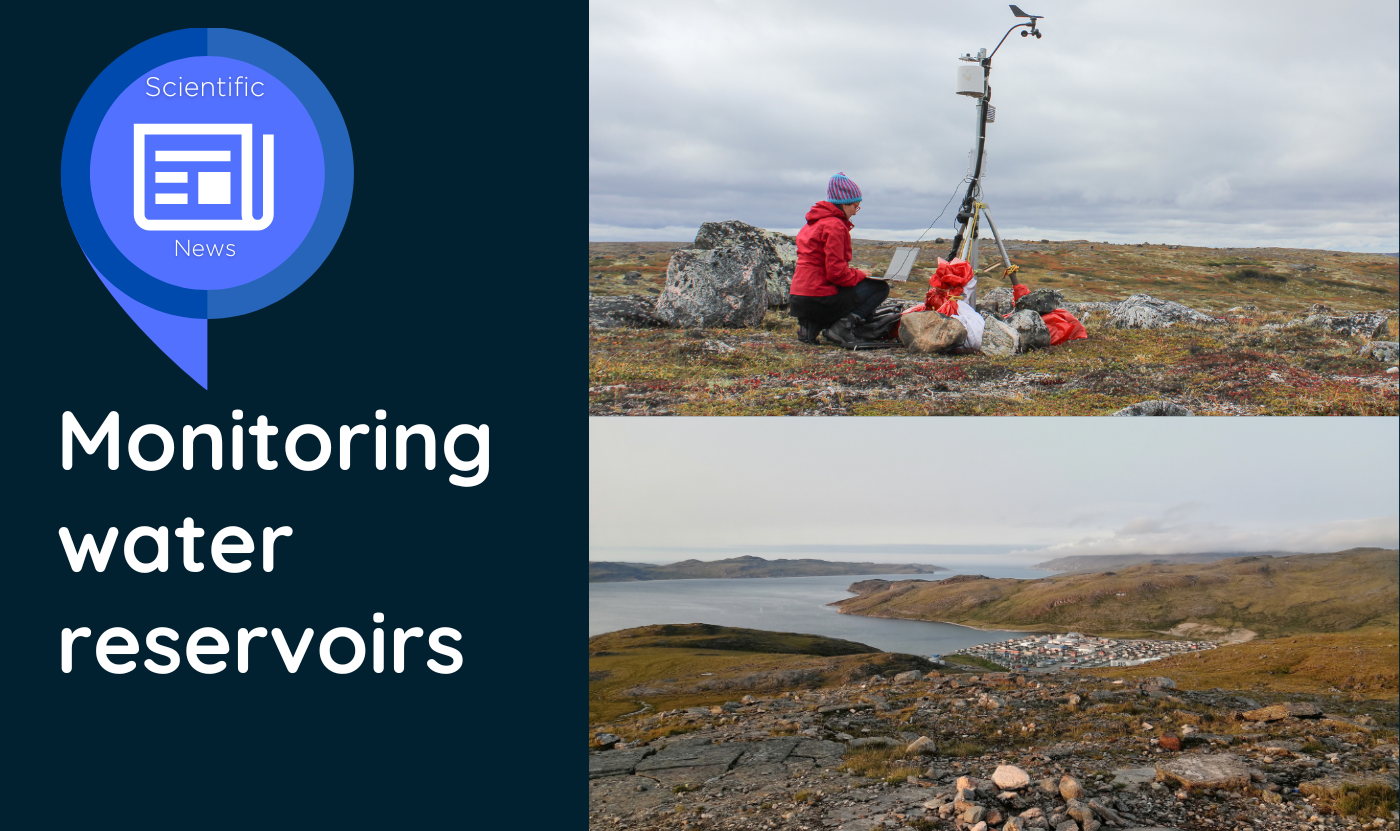Published on June 26 2024 In Scientific news
Monitoring water reservoirs

An article by Valérie Levée, science journalist
In southern Quebec, we turn on the tap and watch the wastewater go down the drain without question. Not so in Nunavik, where permafrost prevents the construction of water and sewer systems. At home, questions arise not only about drinking water management, but also about water quality, as Stéphanie Guilherme, professor in the Department of Civil and Water Engineering at Université Laval, explains.
Every village in Nunavik has a drinking water production station, but the water is distributed by tanker truck, which fills a reservoir at each house. "At home, there's a tap, but access to water depends on the capacity of the reservoir and how often it's filled," explains Stéphanie Guilherme. So, the reservoir is fitted with an indicator that warns when it's almost empty.
But there's another reservoir to keep an eye on - that for wastewater, which is also collected by truck and sent for treatment to an aerated pond just outside the village. This reservoir is fitted with an alarm that indicates when it is almost full, so that the tanker can be called to empty it. However, to avoid adding any more wastewater, this alarm also blocks the pump on the drinking water reservoir. "It's a double management. You must monitor both the drinking water and the wastewater reservoirs," continues Stéphanie Guilherme.
This management has an impact on mental stress and organization of domestic tasks. For example, "you have to ask yourself whether there's enough water for washing and showering," explains Stéphanie Guilherme. Eventually, you'll have to limit flushing, postpone washing or even showering.
However, Inuit have the option of collecting water from the drinking water production station themselves, and in some villages, they have retained the habit of collecting water from a natural spring. In the latter case, it's not necessarily due to a lack of water, but because tap water can taste like chlorine, or the fear that it might be unsafe.
Water quality in the home
Fears about the quality of tap water are legitimate, for while water quality is monitored at the plant, it is not monitored during distribution or in the home.
" Regulations require the villages to monitor potable water at the production plant. Every week, an operator must check the microbiological quality to verify that there are no coliforms in the water at the plant, the water to be treated and the water that will be distributed. But once the water enters the tanker truck, there's no monitoring of water quality. There's no regulatory requirement to sample water in private reservoirs, so we have little or no data on water quality at home," explains Stéphanie Guilherme.
The water stagnates in the reservoirs for several days, and they are only washed every two years. She therefore undertook a research project with the Nunavik Housing Bureau and the Kativik Regional Government to sample the water before and after the reservoirs were cleaned, and to carry out bacteriological and chemical analyses of the water. Since the reservoirs are made of plastic, the plan is to quantify the presence of microplastics in the water. This summer, students will travel to several villages and follow the operators to sample the water in the reservoirs.
Protecting the source of drinking water
Upstream of the drinking water production plant, there's the source, and here too, the Regulation regarding water withdrawal and protection (Règlement sur le prélèvement des eaux et leur protection) requires villages and municipalities, including Nunavik, to assess the vulnerability of drinking water supplies. To this end, the ministère de l’Environnement et de la Lutte contre les changements climatiques has produced a Vulnerability assessment guide for Quebec drinking water (Guide de réalisation des analyses de la vulnérabilité des sources destinées à l'alimentation en eau potable au Québec). However, this guide illustrates the approach to be followed with examples of events or activities likely to contaminate water in the south of the province, which are not adapted to Nunavik. To help Nunavik villages identify activities that could contaminate their drinking water sources, Stéphanie Guilherme and her research team have produced a guide with examples of typical northern activities, such as the presence of a heating oil tank, the passage of all-terrain vehicles or the passage of caribou near the source.
But preserving the water sources may not be enough as Nunavik's population grows, and with it the demand for drinking water. That's why Stéphanie Guilherme is also working with the Kativik Regional Government to identify new sources of drinking water
Further reading
Cassivi, A., Carabin, A., Dorea, C., Rodriguez, Manuel J., Guilherme, S. (2024). Domestic access to water in a decentralized truck-to-cistern system: a case study in the Northern Village of Kangiqsualujjuaq, Nunavik (Canada). J Water Health, 22(5):797-810
https://doi.org/10.2166/wh.2024.246
Cassivi, A., Covey, A., Rodriguez, M., Guilherme, S. (2023). Towards universal access to domestic water: A scoping review on water security in the Arctic. Journal of Environmental Health Science and Engineering, 247, 114060
https://doi.org/10.1016/j.ijheh.2022.114060
Housing and drinking water – Qanuilirpitaa? 2017 Nunavik Inuit Health Survey, Nunavik Regional Board of Health and Social Services/Institut national de santé publique du Québec– 2020
https://ici.radio-canada.ca/nouvelle/1969610/infrastructures-municipales-kativik-eau-gestion
Photos: courtesy of Stéphanie Guilherme
Back to news

